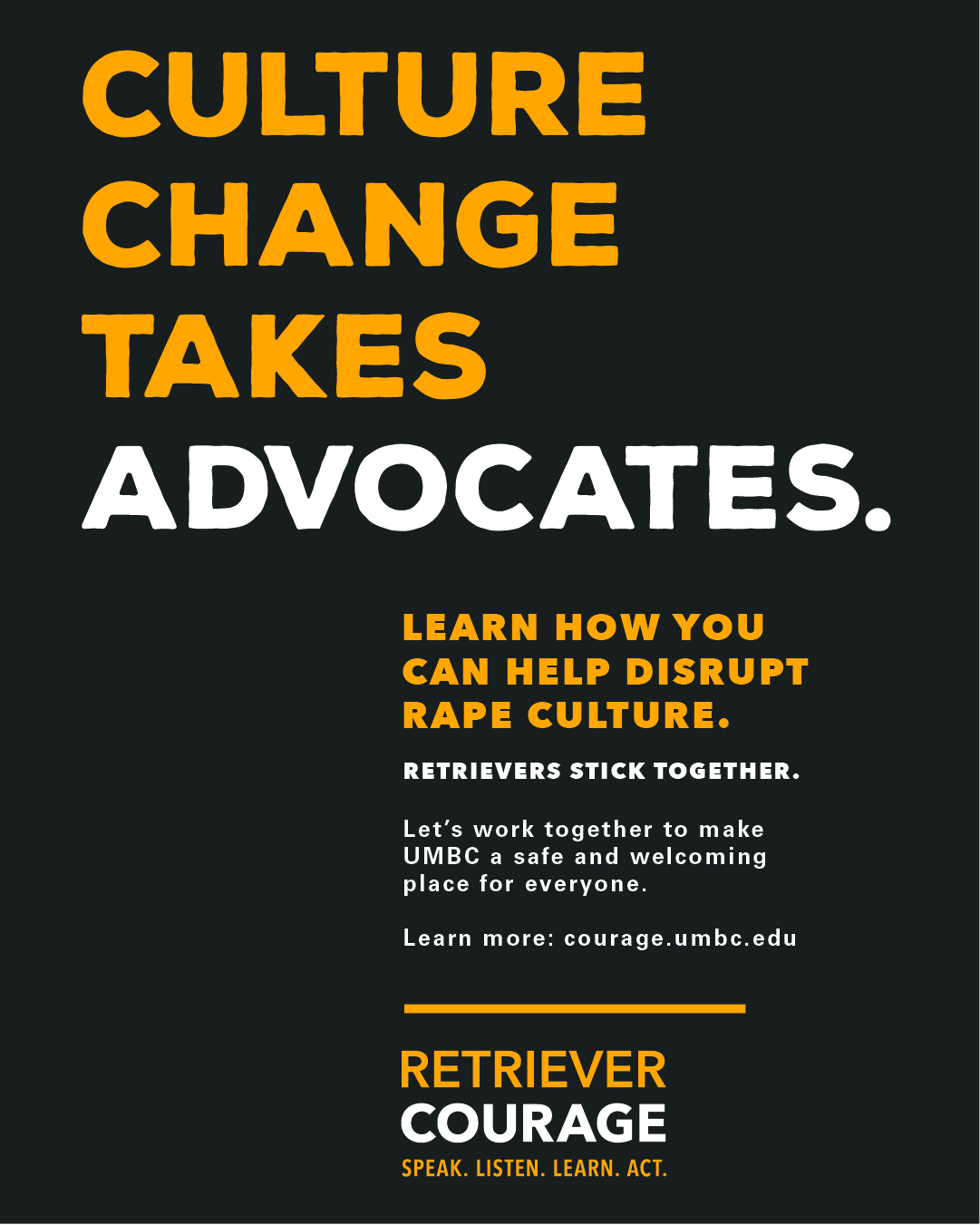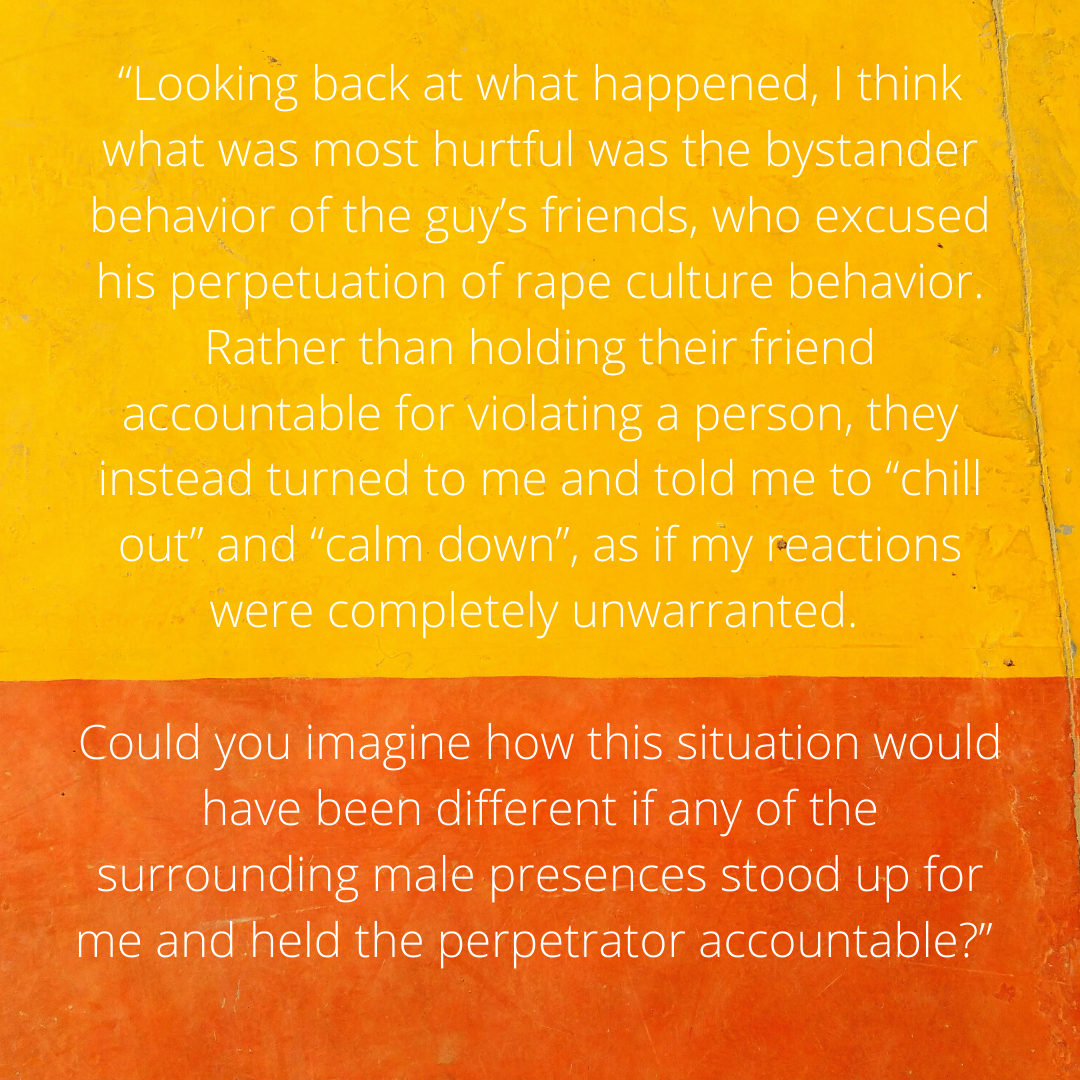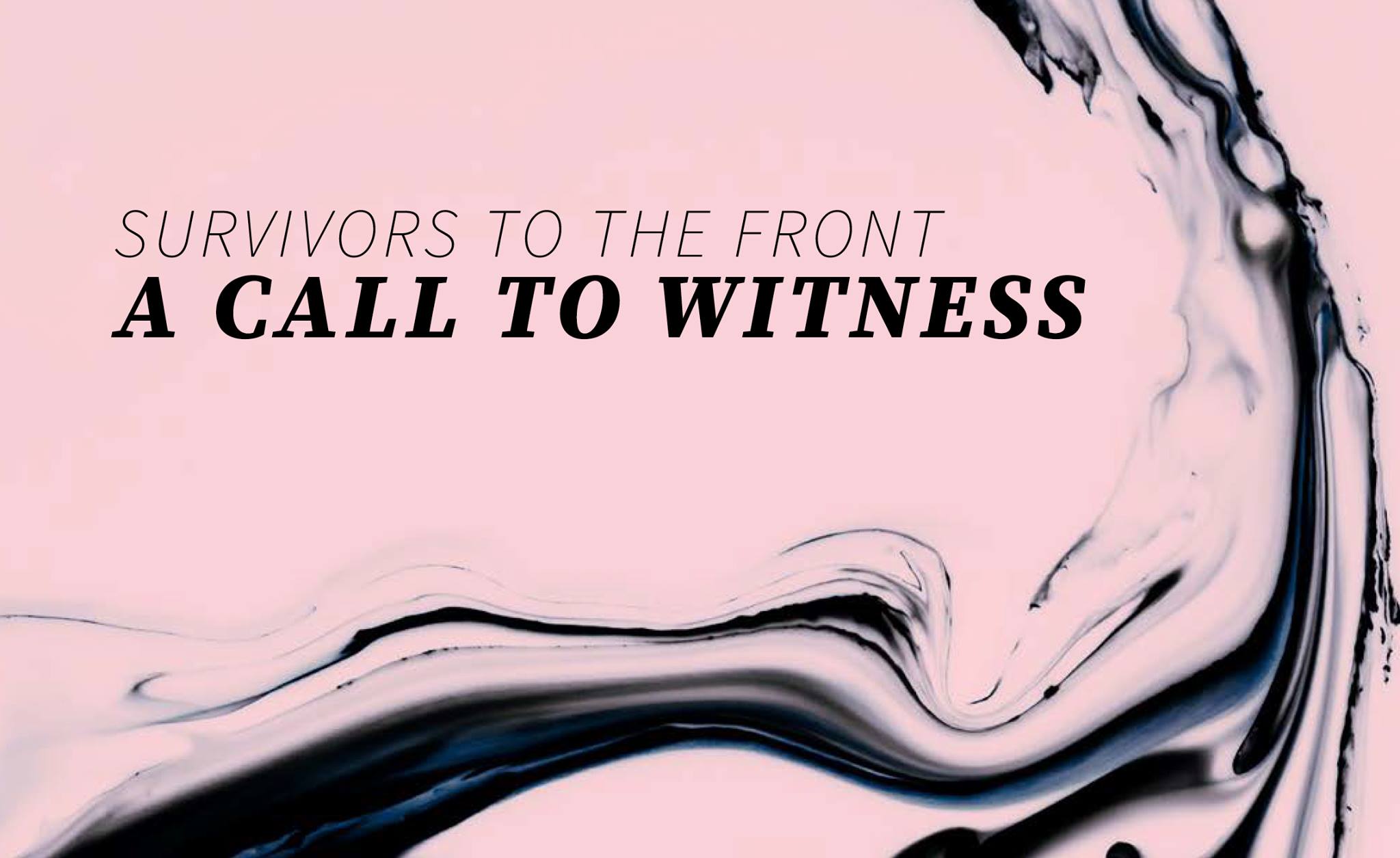In the absence of physical space to learn, create, and come together, the Women’s Center is taking Sexual Assault Awareness Month (SAAM) 2020 online. Each week during April, we will focus on a specific topic/theme as it relates to sexual violence awareness and prevention (see image below). Together, via out social media platforms like Facebook,Twitter, and Instagram, we can watch videos, read articles, and engage in other content for learning and skill-building.

UMBC’s Sexual Assault Awareness Month online calendar includes weekly themes to help explore important concepts related to sexual violence awareness and prevention.
But, we get it… Maybe you’re not on Facebook. Maybe you needed to take a break from social media for the day because you’re practicing self-care. Or maybe, you’re still following us on all the things and still missed a pretty cool post. That’s okay! In addition to posting on social media throughout the month, at the end of each week, we’ll provide a round-up of all the content we shared along with some action items to consider doing.
This is the last SAAM round-up with April ending last week. To conclude this year’s SAAM, we focused on bystander intervention and allyship. We teamed up with our campus partners supporting the work on UMBC’s Green Dot Program to share helpful resources about bystander intervention and shifting cultural norms that encourage looking out for one another and speaking up when others may be in danger.

A Retriever Courage poster that reads “Culture Change Takes Advocates.”
It’s important to remember that ending sexual violence isn’t a survivor’s issue or even a women’s issue…. It’s an everybody issue and we all can play a role in changing our culture.
So what did we explore?
-
““Don’t tell ME to Chill out”– Holding our Friends Accountable and saying NO to Rape Culture.” We shared a blog post from our archives written by former Women’s Center student staff member, Yoo-Jin. In this post,she shares an experience of sexual assault and the troubling aftermath when bystanders didn’t take it seriously. She goes on to share how later she received immense support and validation when she shared her experience online. This is a great read to understand the various ways someone can support a survivor and the ways in which lack of support and believe can reinforce rape culture.

Excerpt from “Don’t Tell Me to Chill Out” blog post.
2. What is a Green Dot? Green Dot is a bystander intervention program that is built on the premise that in order to measurably reduce the perpetration of power-based personal violence, including sexual violence, partner violence, or stalking, a cultural shift is necessary. In order to create a cultural shift, a critical mass of people will need to engage in a new behavior or set of behaviors that will make violence less sustainable within any given community. The “new behavior” is a green dot.
3. The Green Dot program empowers those who are trained to do the right thing for themselves, their neighbor, classmate, teammate or friend. The Green Dot slogan is “No one has to do everything, everyone has to do something.” Through the Green Dot training at UMBC, we learn that the 3 D’s (Distract, Delegate, or Direct!) are a helpful way to understand the various ways one can intervene. Watch this video to learn more.

Image of a red dot and green dot that explains the difference between the two
To see everything posted on our accounts last week, check out the hashtag #UMBCsaam over at Facebook, Twitter, and Instagram.
Also, be sure to follow UMBC’s Green Dot program on Instagram an myUMBC.
What We Didn’t Have Time to Discuss:
→ The root of sexual violence is power oppression and requires we take a power-conscious approach in our awareness, prevention, an response efforts. It’s important that we shift well-intended prevention efforts frequently focused on teaching potential victims how not to get raped and instead teach potential perpetrators not to rape. To develop a deeper understanding of a power-conscious framework, we recommend reading Dr. Chris Linder’s book Sexual Violence on Campus: Power-Conscious Approaches to Awareness, Prevention, and Response.
→ As we already shared, ending sexual violence is everyone’s responsibility but what is the unique role men can play in preventing sexual assault? Watch Jeffrey Bucholtz of We End Violence on Sexual Violence and Male Responsibility to learn more.

Front cover of our SAAM Zine: Survivors to the Front: A Call to Witness
And, in case you missed it, we are beyond proud to share with you all our zine for Sexual Assault Awareness Month. Made by survivors and for the entirety of our community, we hope you can read and share these amazing, powerful, beautiful stories from our very own UMBC community!
You can view Survivors to the Front: A Call to Witness here.
Follow the Women’s Center on myUMBC, Facebook, Twitter, and Instagram for SAAM updates and information throughout the month of April. You can also stay up-to-date by following #UMBCsaam
Throughout this time of distance learning, campus staff are still here and available for support. Do not hesitate to reach out for questions, concerns, or care.
On-Campus Resources Available for Virtual Support:
- After-hours Sexual Assault or Relationship Violence Support: UMBC’s After-Hours Support Line: Between the hours of 5 pm and 8.30 am, on weekends or when the university is closed please call 410-455-3230
-
Visit Retriever Courage for a full list of campus resources and support to include resources for USG students, faculty, and staff
-
For up-to-date details on how to access these resources during this time of distance learning visit UMBC’s COVID-19 resources page.
To report a complaint of sexual misconduct or discrimination, please submit this online form.





